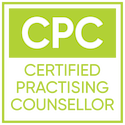Burnout
Understanding Burnout
Burnout is a state of emotional, physical, and mental exhaustion caused by prolonged stress and overwork. It often affects individuals who feel overwhelmed by demands and struggle to find balance in their personal or professional lives. Recognising the symptoms, risk factors, and effective strategies for prevention and recovery is key to managing burnout before it takes a serious toll on well-being.
Mental Burnout Symptoms
Burnout affects the mind and body, often manifesting in both psychological and physical symptoms. Common mental burnout symptoms include:
• Chronic fatigue, feeling drained or exhausted despite rest
• Cynicism or negativity towards work or life in general
• Loss of motivation or enthusiasm, particularly towards previously enjoyed activities
• Detachment from work, feeling disengaged or disconnected
• Impaired concentration or difficulty focusing on tasks
• Emotional instability, such as feeling irritable, anxious, or overwhelmed
• Feelings of helplessness or being stuck in a cycle with no way out
• Self-doubt, feeling like you are incapable of meeting demands or expectations
When burnout is left unchecked, these symptoms can worsen and significantly affect daily life, productivity, and relationships.
Burnout Risk Factors
Several burnout risk factors make individuals more susceptible to this condition. These include:
1. Work-related factors: High workloads, long working hours, lack of support, and unrealistic expectations can contribute to burnout.
2. Personality traits: Perfectionism, people-pleasing tendencies, and difficulty setting boundaries often lead to burnout as individuals take on too much.
3. Poor work-life balance: Failing to prioritise personal time and self-care can cause stress to accumulate, leading to burnout.
4. Lack of control: Feeling powerless or unable to influence decisions at work or in life can increase burnout risk.
5. Unsupportive environments: A toxic work culture, lack of recognition, or unsupportive colleagues can exacerbate stress and burnout.
6. Overcommitment: Taking on too many responsibilities, either in personal or professional life, increases stress and the likelihood of burnout.
Causes of Burnout
Burnout often results from prolonged stress, but there are specific causes of burnout that trigger or contribute to the condition:
• Excessive workload: Continually working beyond one’s capacity can cause mental and physical exhaustion.
• Unclear expectations: When job responsibilities or goals are vague, individuals may feel unsure about their performance, leading to anxiety and stress.
• Lack of recognition: Not receiving acknowledgment or rewards for effort can lead to feelings of frustration and resentment.
• Unbalanced personal life: Neglecting personal well-being or relationships while focusing too much on work or external demands can lead to burnout.
• Conflicting values: When personal values conflict with workplace demands, it can create emotional distress and lead to burnout.
• Lack of control over work: Not having a say in decision-making or feeling micromanaged can increase stress levels.
Burnout Prevention Strategies
Preventing burnout is essential for maintaining long-term well-being. Here are effective burnout prevention strategies:
1. Set realistic goals and expectations: Break tasks into manageable chunks and set achievable deadlines.
2. Prioritise self-care: Regularly engage in activities that recharge you, such as exercise, hobbies, or relaxation practices like meditation.
3. Create boundaries: Learn to say no to additional tasks when you’re at capacity and establish clear work-life boundaries.
4. Foster supportive relationships: Build a strong support network of colleagues, friends, and family members who can provide emotional support and understanding.
5. Delegate tasks: Don’t hesitate to ask for help or delegate tasks when possible to prevent taking on too much responsibility.
6. Practice time management: Prioritise important tasks and avoid overloading your schedule. Allocate time for breaks and relaxation.
7. Take regular breaks: Make time for regular breaks throughout the day to rest your mind and body, especially during long hours at work.
8. Seek professional support: If you feel burnout symptoms starting to appear, don’t hesitate to reach out to a counsellor or mental health professional for guidance.
Burnout Recovery Stages
Recovering from burnout is a gradual process that requires time, support, and patience. The stages of burnout recovery typically include:
1. Acknowledging the problem: The first step is recognising that burnout has occurred and accepting that help is needed.
2. Rest and recovery: Take time off from work or other demanding responsibilities to rest and allow your mind and body to heal.
3. Re-evaluating priorities: Reflect on your values, work-life balance, and personal needs to create a sustainable lifestyle.
4. Gradual reintegration: Slowly return to responsibilities, starting with manageable tasks while building in self-care practices.
5. Building resilience: Learn healthy coping strategies and stress management techniques to prevent burnout in the future.
6. Ongoing support: Regularly check in with yourself, your progress, and seek professional help if needed to maintain long-term well-being.
Copyright © 2024 Your Moments Counselling






